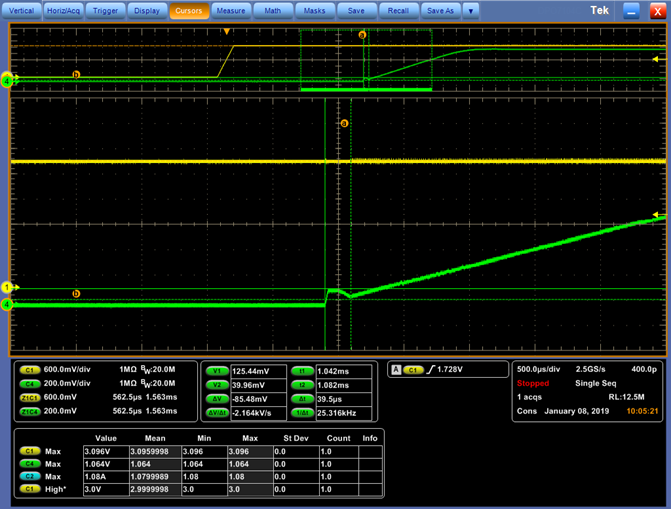Hi team,
My customer is using the TPS549D22 now, and meets Vout Non-Monotonic start up. The RC of RCC R=1kohm C=100nf Load=2A, When change to DCAP3 mode, it works well. Do you have some ideas or experience about the phenomenon? Thanks.
This thread has been locked.
If you have a related question, please click the "Ask a related question" button in the top right corner. The newly created question will be automatically linked to this question.
Hi team,
My customer is using the TPS549D22 now, and meets Vout Non-Monotonic start up. The RC of RCC R=1kohm C=100nf Load=2A, When change to DCAP3 mode, it works well. Do you have some ideas or experience about the phenomenon? Thanks.
Frank,
Why did the customer select the DCAP operation? With DCAP operation, you will need to add additional RCC network across the output inductor. Based on my experience, if the RCC network produces large compensation, the output startup might not be very linear. My suggestion is to use DCAP3 if it works for the customer.
thanks,
Sue